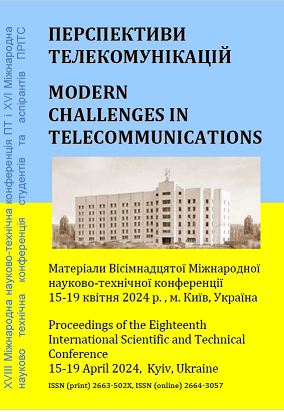ПЕРЕВАГИ ТА НЕДОЛІКИ ВИКОРИСТАННЯ МІКРОСЕРВІСНОГО ПАТТЕРНУ ПРОЕКТУВАННЯ
Ключові слова:
МІКРОСЕРВІСНА АРХІТЕКТУРА, API, SCALABLEАнотація
У роботі розглянуто обґрунтування та переваги мікросервісної архітектури, включаючи модульність, гнучкість, масштабованість та ізоляцію помилок. Описано переваги, такі як швидка розробка, легка заміна технологій та швидкість інновацій. Висвітлені недоліки, як складність системи, проблеми розподіленості та тестування.Посилання
Приходченко, С. Д., Роина, К. С., Поштак, Р. В. (2018). Обгрунтування вибору мікросервісної архітектури в порівнянні з монолітною. [Електронний ресурс]. URL: http://ir.nmu.org.ua/handle/123456789/153837
Новак, В. В. (2022). Порівняння монолітної та мікросервісної архітектур на прикладі корпоративного застосунку. [Електронний ресурс]. URL: https://dspace.znu.edu.ua/jspui/handle/12345/9531
Степанова, Н. І. (2022). АНАЛІЗ МІКРОСЕРВІСНИХ ТА МОНОЛІТНИХ АРХІТЕКТУР. Міжнародний науковий комітет, 91. [Електронний ресурс]. URL: https://www.dnu.dp.ua/docs/ndc/2022/materiali/25_%D0%9C%D0%9F%D0%97%D0%86%D0%A1-2022-1.pdf#page=91
Newman, S. (2019). Monolith to microservices: evolutionary patterns to transform your monolith. O'Reilly Media. [Електронний ресурс]. URL: https://books.google.com.ua/ books?hl=uk&lr=&id=nNa_DwAAQBAJ&oi=fnd&pg=PP1&dq=Monolith+to+microservices:+evolutionary+patterns+to+transform+your+monolith.+O%27Reilly+Media&ots=eiUW1wnefH&sig=DNeWIzndCLJrTox2-7RSz6OgYj4&redir_esc=y#v=onepage&q=Monolith%20 to%20microservices%3A%20evolutionary%20patterns%20to%20transform%20your%20monolith.%20O'Reilly%20Media&f=false
Thönes, J. (2015). Microservices. IEEE software, 32(1), 116-116. [Електронний ресурс]. URL: https://ieeexplore.ieee.org/abstract/document/7030212
##submission.downloads##
Опубліковано
Як цитувати
Номер
Розділ
Ліцензія

Ця робота ліцензується відповідно до Creative Commons Attribution 4.0 International License.
Authors who submit to this conference agree to the following terms:a) Authors retain copyright over their work, while allowing the conference to place this unpublished work under a Creative Commons Attribution License, which allows others to freely access, use, and share the work, with an acknowledgement of the work's authorship and its initial presentation at this conference.
b) Authors are able to waive the terms of the CC license and enter into separate, additional contractual arrangements for the non-exclusive distribution and subsequent publication of this work (e.g., publish a revised version in a journal, post it to an institutional repository or publish it in a book), with an acknowledgement of its initial presentation at this conference.
c) In addition, authors are encouraged to post and share their work online (e.g., in institutional repositories or on their website) at any point before and after the conference.

